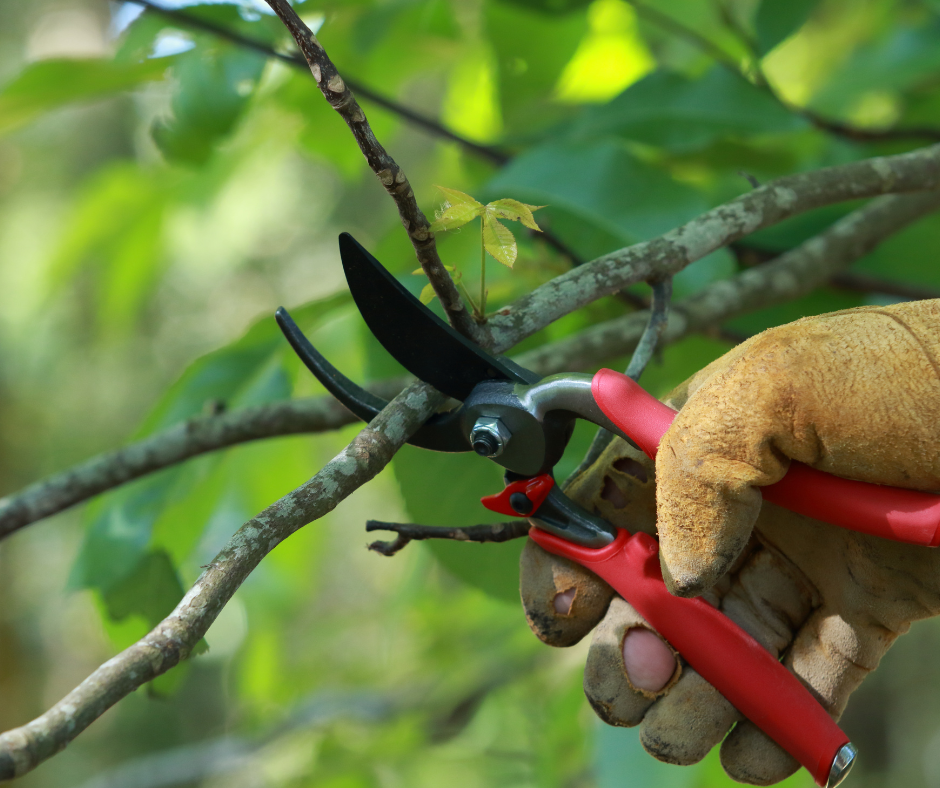
Unlock Spring Blooms: The Definitive Guide to Pruning Your Flowering Plants, Shrubs, and Trees in the UK
-
28 May 2025
As the days lengthen and the first flush of spring colour begins to paint the UK landscape, a crucial task awaits to ensure a vibrant and healthy display for the season ahead: pruning. More than just a tidy-up, strategic spring pruning is an essential practice that encourages abundant blooms, maintains plant health, and shapes your garden for years to come. This comprehensive guide will delve into the art and science of spring pruning, tailored specifically for the flowering wonders of the British Isles. For expert advice on maintaining vibrant landscapes, visit Urban Planters.
Why Prune in Spring? More Than Just Encouraging Flowers
While the promise of abundant blooms is a primary motivator for spring pruning, the benefits extend far beyond mere aesthetics:
- Boosting Flower Power: Removing dead, damaged, or weak growth redirects the plant’s energy towards producing strong, healthy stems capable of supporting a profusion of flowers. Think of it as streamlining the plant’s resources for maximum floral impact.
- Maintaining Plant Health: Pruning away dead or diseased wood prevents the spread of infection and decay, ensuring the overall health and longevity of your plants. Good airflow, encouraged by selective pruning, also helps to reduce the risk of fungal diseases.
- Shaping and Size Control: Spring is an ideal time to shape young plants and manage the size of established shrubs and trees. This ensures they fit harmoniously within your garden design and don’t outgrow their allotted space.
- Improving Light Penetration and Air Circulation: A dense, overgrown plant can suffer from poor light penetration and restricted airflow. Pruning opens up the canopy, allowing sunlight to reach inner branches and improving air circulation, both vital for healthy growth and flowering.
- Rejuvenating Mature Plants: Over time, some flowering shrubs can become less productive. Hard pruning in late winter or early spring can rejuvenate older plants, encouraging vigorous new growth and a renewed flowering display.
- Encouraging Specific Growth Habits: Depending on the plant, pruning can encourage bushier growth, a more upright form, or even the development of more desirable flowering wood.
Your Spring Pruning Toolkit: Essential Equipment
Before you begin, ensure you have the right tools for the job. Sharp, clean tools make precise cuts and minimise damage to the plant, reducing the risk of disease. Essential tools include:
- Secateurs (Hand Pruners): For stems up to about 2cm (¾ inch) thick. Choose bypass secateurs for clean, scissor-like cuts on living stems.
- Loppers: For thicker branches, up to about 5cm (2 inches). The longer handles provide greater leverage.
- Pruning Saw: For branches thicker than loppers can handle. A folding pruning saw is handy and safe.
- Gloves: To protect your hands from thorns and rough stems.
- Sharpener: To keep your blades in top condition.
- Disinfectant: To clean your tools between cuts, especially when pruning diseased material (use a solution of household bleach diluted with water or surgical spirit).

A UK Spring Pruning Calendar: Plant-Specific Guidance
The timing and method of pruning vary significantly depending on the type of spring-flowering plant. Here’s a guide to some popular choices in the UK:
- Forsythia: These vibrant yellow bloomers flower on the previous year’s wood. Prune immediately after flowering has finished, typically in late spring. Cut back flowered shoots by about a third to encourage new growth for next year’s display.
- Early-Flowering Clematis (Group 1): Varieties that flower before June, such as Clematis alpina and Clematis macropetala, also flower on the previous year’s wood. Prune lightly, if needed, immediately after flowering to remove any dead or overcrowded stems. Avoid hard pruning in spring, as you’ll be removing the flowering buds.
- Rhododendrons and Azaleas: These generally require minimal pruning. The best time to prune, if necessary, is immediately after flowering. Remove any dead, damaged, or crossing branches to maintain shape and encourage airflow. Avoid heavy pruning.
- Flowering Cherries and Other Ornamental Fruit Trees (e.g., Prunus species): Pruning is best done in mid to late summer to reduce the risk of silver leaf disease. However, light formative pruning can be done in spring on young trees to establish a good shape. Remove any dead, diseased, or crossing branches. Avoid heavy pruning in spring on established trees.
- Spring-Flowering Heathers (e.g., Erica carnea, Erica x darleyensis): Prune immediately after flowering to keep them compact and encourage new growth. Shear off the faded flower spikes and a small amount of the foliage beneath. Avoid cutting back into old wood.
- Other Spring-Flowering Shrubs (e.g., Lilac, Mock Orange): These typically flower on the previous year’s wood. Prune immediately after flowering by removing spent flowerheads and thinning out overcrowded or crossing branches.
Common Spring Pruning Mistakes to Avoid:
Steering clear of these common errors will ensure you’re helping, not hindering, your spring-flowering plants:
- Pruning Too Early: Pruning before the risk of hard frost has passed can damage new growth. Wait until the weather has settled.
- Pruning Spring-Flowering Plants Too Hard in Spring: As many spring bloomers flower on last year’s wood, heavy spring pruning can remove the very buds that would have produced flowers. Know your plant’s flowering habit!
- Using Dull or Dirty Tools: This can lead to ragged cuts that are more susceptible to disease. Always use sharp, clean tools.
- Removing Too Much at Once: Unless you’re rejuvenating an old plant, avoid removing more than about a third of the growth in any one pruning session.
- Ignoring Dead or Diseased Wood: This should be removed promptly, regardless of the time of year.
Urban Planters’ Expert Touch: Ensuring a Blooming Success
At Urban Planters, our horticultural experts understand the nuances of pruning a wide range of flowering plants, shrubs, and trees in the UK climate. We can provide tailored pruning services to ensure your commercial landscapes and interior plant displays not only look their best but also thrive and produce stunning spring blooms year after year. If you’d prefer to leave the intricacies of pruning to the professionals, our maintenance teams are ready to assist.
Unlock the full potential of your spring-flowering plants with the knowledge and techniques outlined in this guide. With the right approach, you can ensure a spectacular display of colour and a healthy, vibrant garden or commercial landscape.